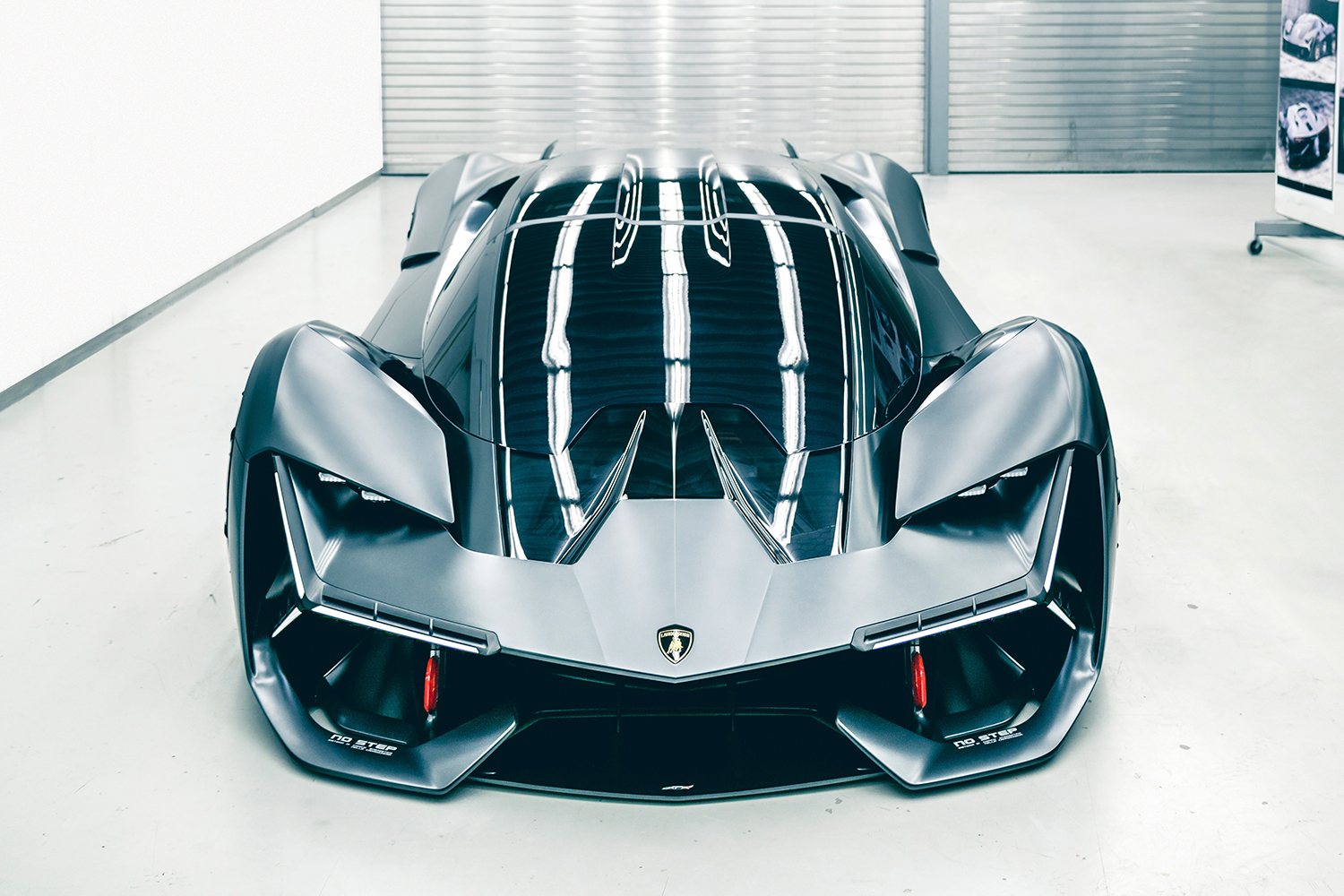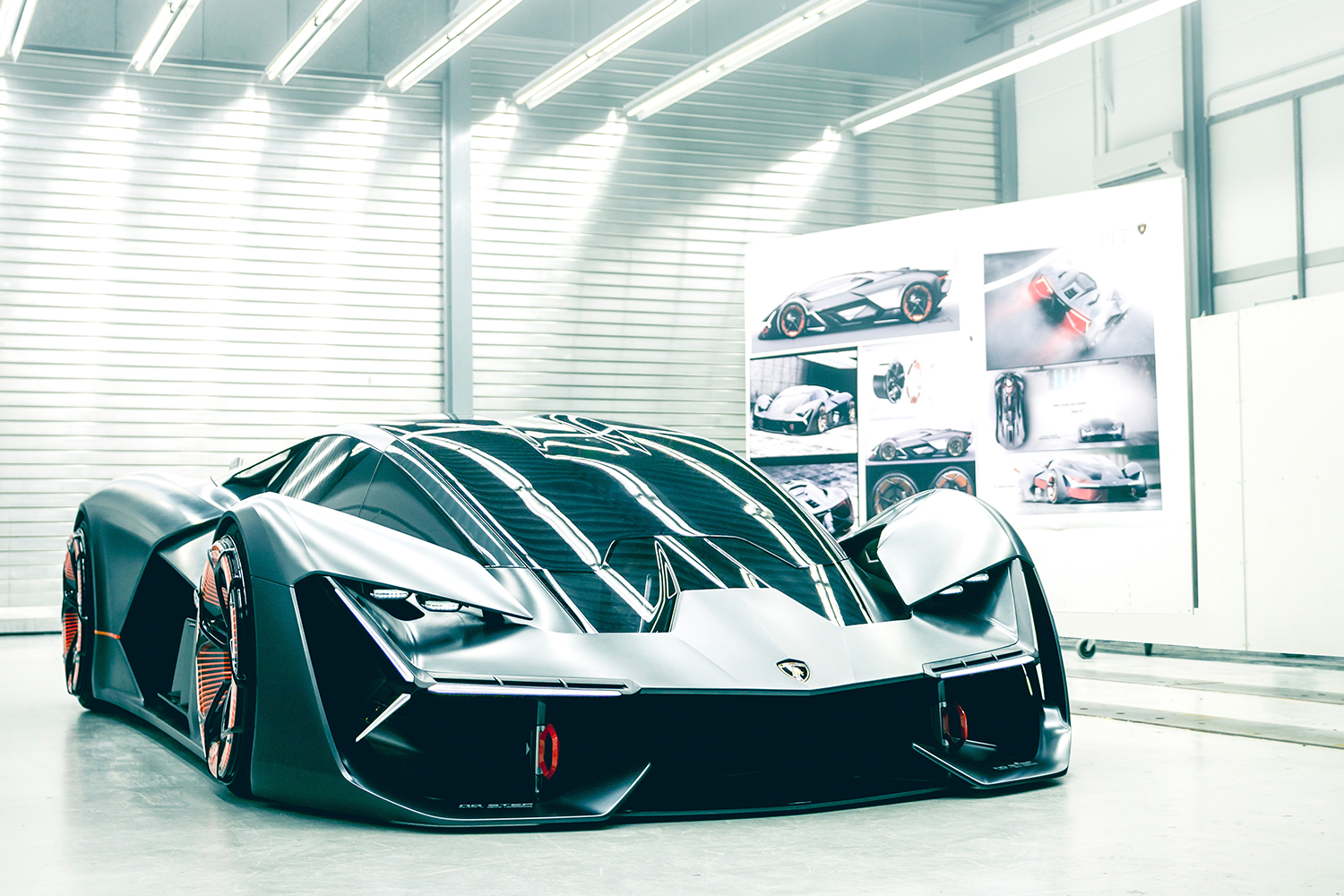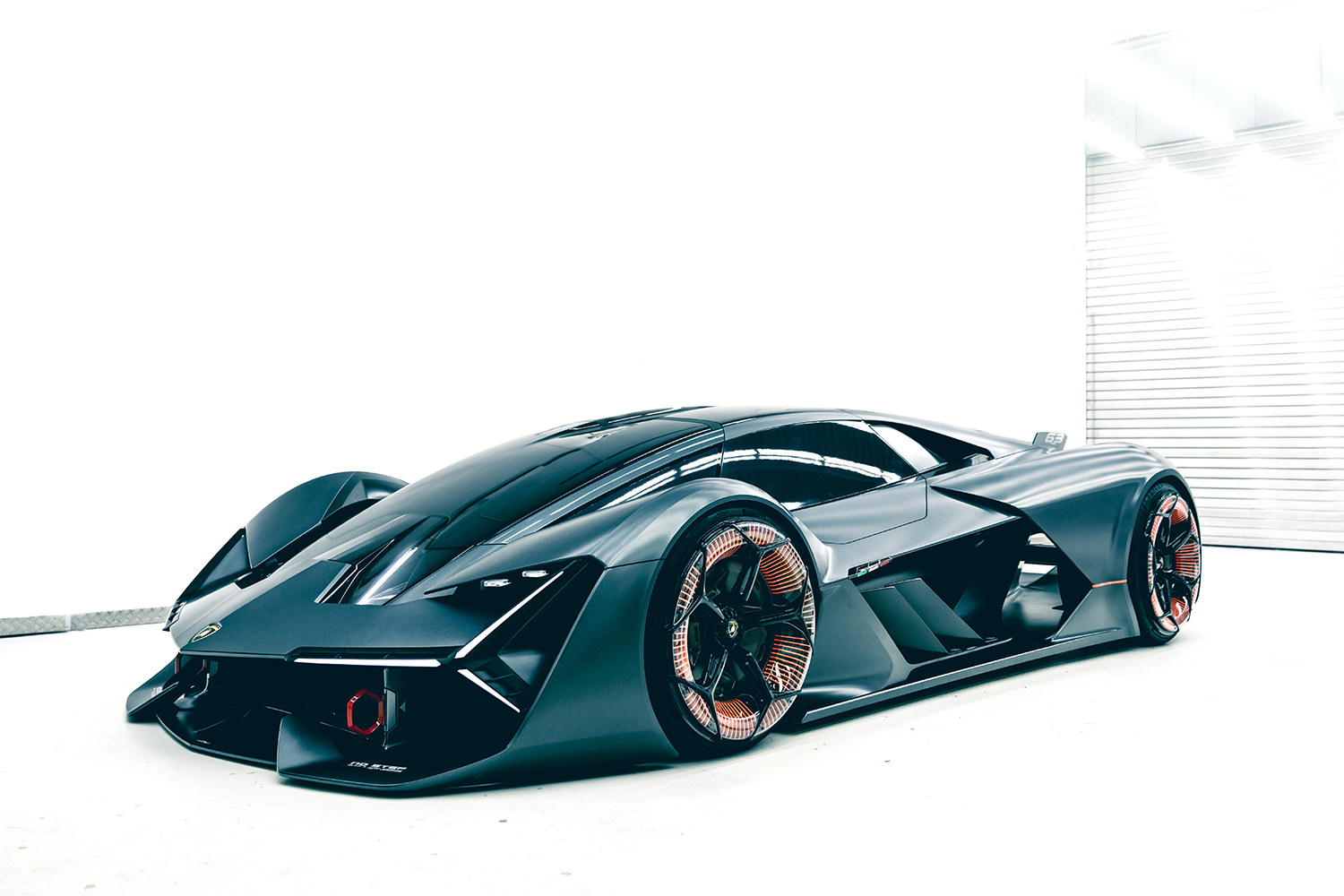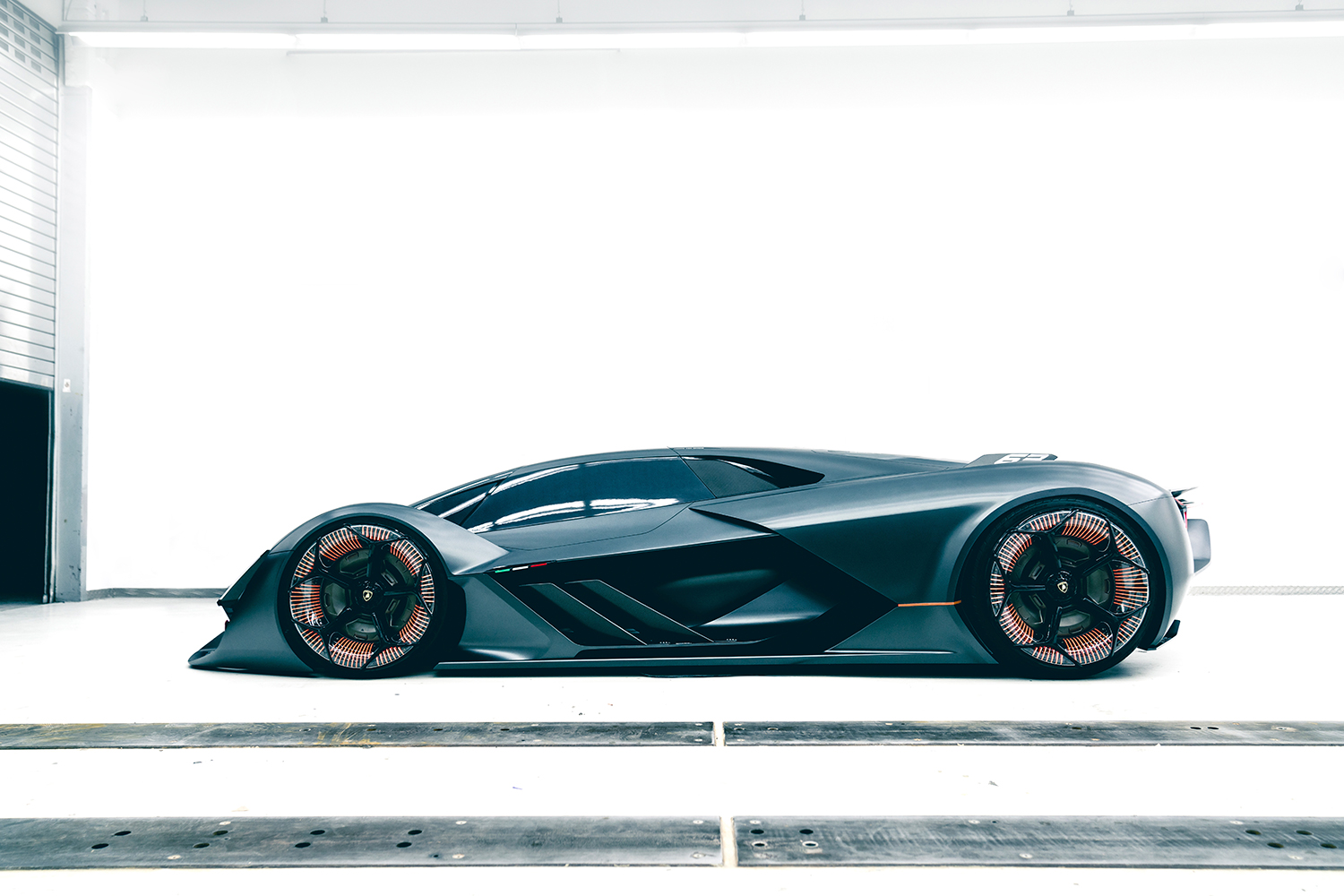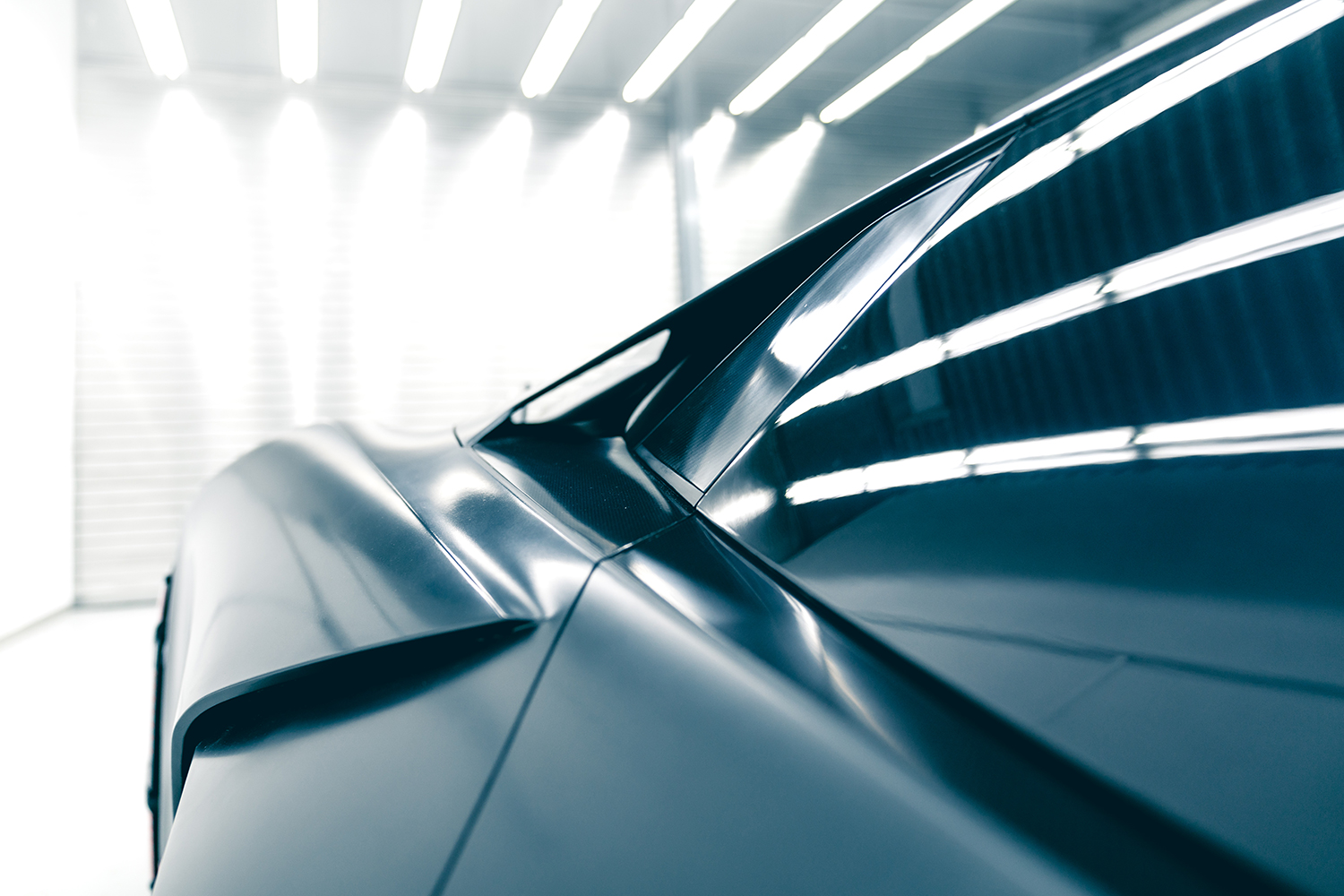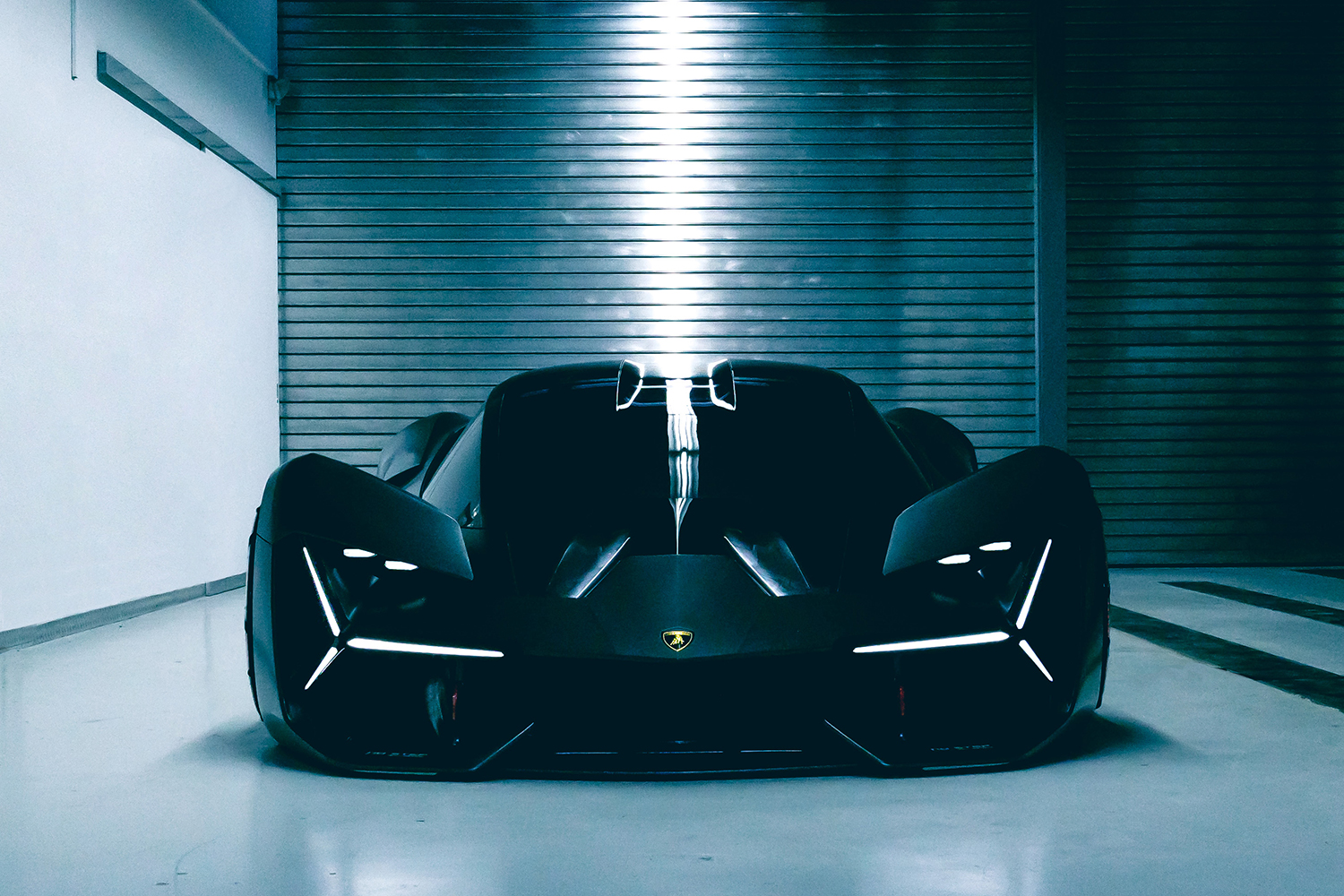Lamborghini and the Massachusetts Institute of Technology (MIT) introduced the Terzo Millennio, an ultra-futuristic design study powered by electricity, last year to show what the eco-friendly sports car of tomorrow could look like. While the whole package tells a tale set in the relatively distant future, Digital Trends learned from Maurizio Reggiani, the head of Lamborghini’s research and development department, that it might not be as science fiction-esque as it appears.
Reggiani told us Lamborghini often discusses what a full electric car could look like and when it might realistically arrive. His team always comes to the same conclusion: the present-day technology used in cars built by the likes of Tesla, Nissan, and Jaguar is not suitable to power a super sports car like the Aventador S. The main problems are the weight and the packaging of the battery pack.

“[Our cars] must have a top speed superior to 186 mph, they must be able to run three full laps at full speed on the Nordschleife, and they must have state-of-the-art handling. You cannot do this with the current battery technology,” he explained.
As it stands, a majority of existing and upcoming electric vehicles destined for volume production use a skateboard-like chassis that places a lithium-ion battery pack roughly as big as a queen-size mattress between the axles. This solution works particularly well for crossovers and SUVs, but it doesn’t cut it for Lamborghini because it creates packaging constraints and adds far too much weight. The answer, according to Reggiani, likely lies in state-of-the-art rechargeable body panels.
The Terzo Millennio illustrates it’s technically possible to store energy in parts made out of carbon fiber; body panels, in this case, but even suspension components and the seat backs. Anything made with the lightweight composite material is fair game. It’s a future ground-breaking technology the brightest minds from Lamborghini and MIT are working to turn into a reality. Reggiani stresses that, in his opinion, offsetting the weight of an electric drivetrain by storing energy in the body panels is the only way to make a super sports car – not a sports car – electric.
So, what does the future hold for the Terzo Millennio and the technology it demonstrates? It ultimately depends on a variety of factors, including some outside of the brand’s control.
“Theoretically, in 2030 you could have a full electric Lamborghini. If something fails we’ll say no.”
“I can tell you the research project [with MIT] will finish in three years. When we arrive at the end of the project we’ll decide whether it’s yes or no. Assuming it’s a yes, you need about two years for industrialization. Plus, you need another five years to put a car in production. That means, theoretically, in 2030 you could have a full electric Lamborghini. If something fails we’ll say no,” Reggiani clarified.
Reading between the lines, his comments all but confirm the Aventador’s successor won’t arrive as a battery-electric vehicle. The brand recently confirmed the yet-unnamed model will adopt a plug-in hybrid powertrain, a solution which reins in the weight gain inevitably associated with electrification while adding performance and giving fuel economy an appreciable boost. And, as an added bonus, going hybrid means the car will continue to use the naturally-aspirated V12 engine which has characterized Lamborghini’s flagship models for decades.
Don’t expect to find a pair of turbochargers strapped to the side of a super sports car’s engine anytime soon, though. The new Urus relies on forced induction but it’s the exception, not the rule.
“It’s not a question of what kind of engine you put in a car. It’s a question of finding the right profile for the car. If it’s a car that goes off-road, a turbo engine is the best one because you have huge torque at low engine rpm. If you have a super sports car, you need to have responsiveness, good sound, and you don’t need to have a high level of torque at low rpm. You need to move the torque as high as possible,” Reggiani explained.
